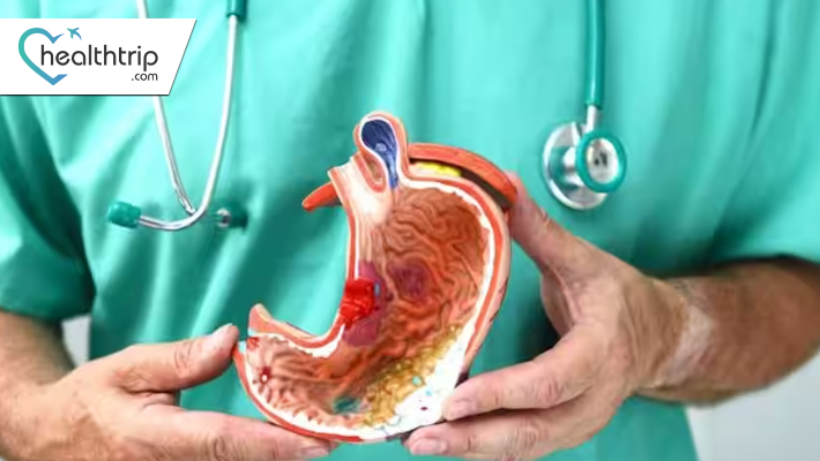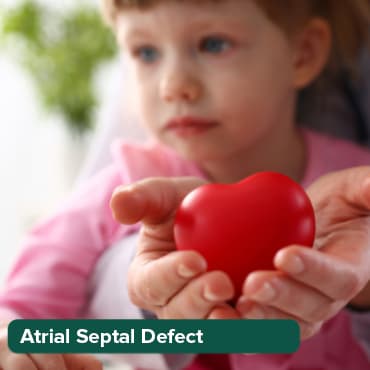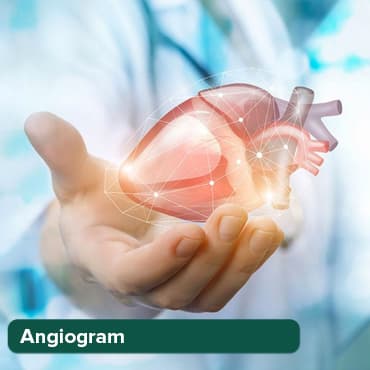
Bile Duct Cancer: Symptoms, Treatment, and Hope
19 Oct, 2023
 Healthtrip Team
Healthtrip TeamIn this blog, we unravel the symptoms, treatment options, and the hope that accompanies the quest for better health. Join us as we navigate through the complexities, shedding light on the essentials of understanding and managing bile duct cancer.
Transform Your Beauty, Boost Your Confidence
Find the right cosmetic procedure for your needs.

We specialize in a wide range of cosmetic procedures

Bile Duct Cancer -
Bile Duct Cancer, clinically known as cholangiocarcinoma, is an aggressive malignancy originating in the bile ducts, crucial for bile transport from the liver to the small intestine.Understanding this pathology is vital due to its insidious nature, rapid progression, and limited treatment options, demanding heightened medical awareness and research focus.
Types
A. Intrahepatic Bile Duct Cancer - Occurring within the liver, this variant of bile duct cancer defies early detection, often leading to advanced stages before clinical manifestation.
B. Perihilar Bile Duct Cancer - Targeting the bile ducts near the liver hilum, perihilar bile duct cancer poses intricate challenges in treatment, frequently necessitating complex surgical interventions.
Most popular procedures in India
Atrial septal defect
Upto 80% off
90% Rated
Satisfactory

Coronary Angiogram a
Upto 80% off
90% Rated
Satisfactory

Coronary Angiogram C
Upto 80% off
90% Rated
Satisfactory

Liver Transplant
Upto 80% off
90% Rated
Satisfactory

Total Hip Replacemen
Upto 80% off
90% Rated
Satisfactory

C. Distal Bile Duct Cancer - Affecting the lower segment of the bile ducts, distal bile duct cancer poses diagnostic difficulties, making it imperative to scrutinize symptoms for timely intervention.
Demographics
A. Age distribution - Bile duct cancer exhibits a broad age spectrum, with a higher incidence observed in individuals over 60 years old. However, rare cases may manifest in younger age groups.
B. Gender prevalence - While both genders can be affected, studies suggest a slightly higher prevalence in males. The reasons for this gender bias remain under investigation.
C. Geographical variations - Bile duct cancer demonstrates geographical disparities, with certain regions exhibiting elevated incidence rates. Environmental factors, lifestyle, and genetic predispositions may contribute to these variations.
Symptoms and Signs
A. Jaundice - Yellowing of the skin and eyes due to the accumulation of bilirubin.
B. Abdominal pain - Dull or sharp pain in the upper abdomen, often associated with tumor growth or obstruction.
C. Unexplained weight loss - Significant and unintentional weight loss, a common symptom in advanced stages of bile duct cancer.
D. Itching - Pruritus caused by the buildup of bile salts in the bloodstream due to impaired bile flow.
E. Pale-colored stools - Light-colored or clay-like stools resulting from insufficient bile reaching the intestines.
Causes
A. Primary causes
- Genetic mutations leading to uncontrolled cell growth in the bile duct lining.
- Chronic inflammation of the bile ducts, such as in primary sclerosing cholangitis.
B. Risk factors associated with bile duct cancer
- Chronic biliary inflammation and infections.
- Liver fluke infestations in certain geographical areas.
- Exposure to certain chemicals and industrial toxins.
Diagnosis
A. Imaging Tests (CT Scans, MRI)
Imaging tests, such as CT scans and MRI, play a pivotal role in diagnosing bile duct cancer. These non-invasive procedures provide detailed images of the liver and surrounding structures. CT scans utilize X-rays to create cross-sectional images, while MRI uses magnetic fields and radio waves. These imaging modalities help identify abnormalities, including tumors or blockages in the bile ducts, enabling healthcare professionals to visualize the extent and location of the cancer.
B. Biopsy Procedures
Biopsy procedures involve the collection of tissue samples for detailed examination. Fine-needle aspiration or surgical biopsy may be performed to obtain specimens from the suspected cancerous areas. Histopathological analysis of these samples confirms the presence of cancer cells and provides insights into the type and grade of the tumor. Biopsy results are crucial for accurate diagnosis and subsequent treatment planning.
C. Blood Tests (Liver Function Tests)
Liver function tests are a key component in diagnosing bile duct cancer. These blood tests assess the levels of enzymes and substances produced by the liver. Elevated levels of certain enzymes, such as alkaline phosphatase and bilirubin, may indicate impaired liver function or obstruction of the bile ducts. Abnormalities in liver function tests can prompt further investigations into the underlying cause, potentially leading to the diagnosis of bile duct cancer.
D. Endoscopic Retrograde Cholangiopancreatography (ERCP)
ERCP is both a diagnostic and therapeutic procedure used in the evaluation of bile duct conditions. It involves the insertion of a flexible tube with a camera (endoscope) through the mouth and into the small intestine. Contrast dye is then injected into the bile and pancreatic ducts, making them visible on X-rays. ERCP aids in identifying blockages, strictures, or tumors in the bile ducts and allows for the collection of tissue samples (biopsy) during the procedure, contributing to a comprehensive diagnostic assessment.
Treatment Options
A. Surgery
- Partial Hepatectomy: Partial hepatectomy involves removing a section of the liver containing the tumor while aiming to preserve as much healthy tissue as possible. This procedure is often considered for localized tumors within specific liver segments that haven't extensively spread. It's a targeted approach to excise cancerous tissue and maintain crucial liver function.
- Whipple Procedure: The Whipple procedure, or pancreaticoduodenectomy, is a complex surgery removing the head of the pancreas, gallbladder, a portion of the small intestine (duodenum), and the bile duct. It is commonly employed for tumors at the challenging junction of the bile duct and pancreas. This procedure is reserved for cases where less invasive methods are insufficient, and its application is determined by the tumor's location and extent.
B. Chemotherapy
Chemotherapy employs potent drugs to target and destroy rapidly dividing cancer cells. Administered orally or intravenously, these drugs circulate throughout the body, impacting both the primary tumor and potential metastases. Chemotherapy is often used as an adjuvant treatment to surgery, eliminating remaining cancer cells, or as a primary treatment when surgery is not feasible.
C. Radiation Therapy
Radiation therapy uses high-dose radiation to target and damage cancer cells. Administered externally through a machine or internally via implanted radioactive sources, it is employed to shrink tumors before surgery, eliminate remaining cancer cells post-surgery, or as a palliative measure to alleviate symptoms in advanced cases.
D. Liver Transplant
Liver transplant involves replacing a diseased liver with a healthy one from a deceased or living donor. This option is considered in select cases where the cancer is confined to the liver and the patient meets specific transplantation criteria. Liver transplant is reserved for early-stage bile duct cancer patients who are not suitable candidates for surgical resection, contingent on the availability of a suitable donor organ.
Risk Factors
A. Primary Risk Factors
- Chronic Inflammation of the Bile Ducts (Cholangitis): Prolonged inflammation of the bile ducts can lead to cellular changes and an increased risk of developing cancer. Conditions such as primary sclerosing cholangitis (PSC) contribute to chronic inflammation.
- Presence of Liver Flukes in Certain Geographical Areas: In specific regions, parasitic infections by liver flukes are associated with an elevated risk of bile duct cancer. The liver fluke infestation is prevalent in parts of Asia and Africa, particularly in communities with a high consumption of raw or undercooked freshwater fish.
B. Secondary Risk Factors
- Chronic Biliary Infections: Persistent infections within the biliary tract can contribute to the development of cancer. Chronic infection with hepatitis C, for example, is linked to an increased risk of bile duct cancer.
- Exposure to Industrial Toxins and Chemicals: Certain occupational exposures to toxins and chemicals, such as those found in certain industries, may heighten the risk of bile duct cancer. This includes exposure to substances like Thorotrast, a contrast agent used in the past for medical imaging.
C. Genetic Predispositions
- Inherited Genetic Mutations: Specific genetic mutations passed down through families can increase an individual's susceptibility to bile duct cancer. Disorders like Lynch syndrome or biliary papillomatosis are examples where genetic factors play a significant role.
Complications
A. Metastasis
- Spread of Cancer Cells to Other Organs: Bile duct cancer, if not detected and treated early, can lead to metastasis, where cancer cells travel to other organs, such as the lungs, lymph nodes, or even distant parts of the liver.
B. Liver Failure
- Impaired Liver Function: Extensive damage to the liver from the progression of bile duct cancer can result in impaired liver function. This can eventually lead to liver failure, a serious and life-threatening complication.
C. Complications Post-Surgery
- Infection: Surgical interventions for bile duct cancer carry the risk of postoperative infections, which can impede recovery and necessitate additional medical attention.
- Bleeding: Surgery may lead to bleeding, either during the procedure or afterward, requiring careful monitoring and potential intervention.
- Adverse Reactions to Anesthesia: Complications related to the administration of anesthesia can occur, and individual responses to anesthesia vary, necessitating vigilant postoperative care.
Preventive Measures
A. Lifestyle Changes
- Maintaining a Healthy Diet and Weight: Adopting a diet rich in fruits, vegetables, and lean proteins while maintaining a healthy weight can contribute to overall well-being and potentially reduce the risk of developing bile duct cancer.
- Avoiding Tobacco and Excessive Alcohol Consumption: Tobacco use and heavy alcohol consumption have been linked to an increased risk of various cancers, including bile duct cancer. Avoiding these risk factors can contribute to a healthier lifestyle.
B. Screening and Early Detection
- Regular Medical Check-ups and Screenings: Individuals with risk factors, such as a history of biliary diseases or exposure to environmental toxins, should undergo regular medical check-ups and screenings. Early detection can facilitate prompt intervention and improved outcomes.
C. Hepatitis B Vaccination
- Vaccination Against Hepatitis B: Since chronic hepatitis B infection is a known risk factor for bile duct cancer, vaccination against hepatitis B is a preventive measure to reduce the risk of associated bile duct cancer.
In conclusion, the journey through the intricacies of bile duct cancer reveals a landscape of challenges, advancements, and hope. From recognizing the subtle symptoms to exploring a spectrum of treatment options, this exploration underscores the importance of awareness and proactive healthcare. While complications and risks are acknowledged, the ongoing strides in medical research and the array of preventive measures provide a beacon of hope.
Wellness Treatment
Give yourself the time to relax
Lowest Prices Guaranteed!

Lowest Prices Guaranteed!




